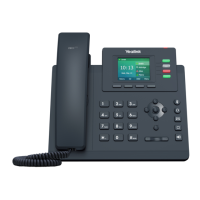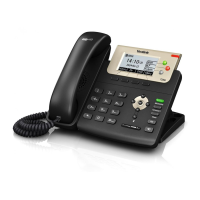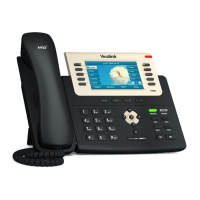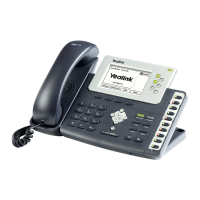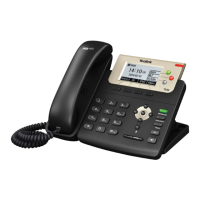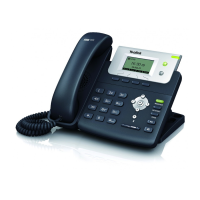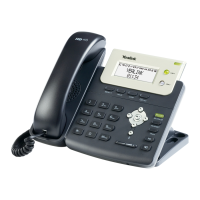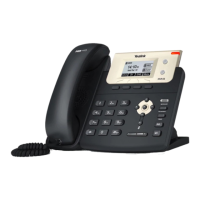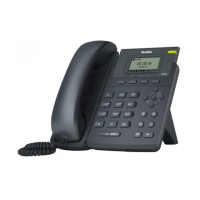Configuring Advanced Features
65
Many SIP servers are deployed in redundant pairs, designated as primary and
secondary servers. The IP phone must always contact the primary server except in
failover conditions. Server redundancy is often required in VoIP deployments to ensure
continuity of phone service, for events where the server needs to be taken offline for
maintenance, the server fails, or the connection from the IP phone to the server fails. The
IP phone is able to route to a secondary (or alternate) server in a failure situation, which
requires the use of DNS SRV query for the resolution of proxy address as specified by
RFC 3263.
When the IP phone accesses the internet, it sends out a DNS SRV query to the server to
look up the IP address and port, and then waits for a response from the server. The DNS
SRV query involves NAPTR, SRV and A queries, which allows the IP phone to adapt to
various deployment environments. The DNS SRV query is configurable on a per-account
basis.
NAPTR (Naming Authority Pointer)
First, the IP phone sends the NAPTR query to get the SRV pointer and service type. As an
example, consider the IP phone wishes to resolve ―sip:user@example.com‖. The IP
phone performs a NAPTR query for that domain, and the following NAPTR records may
be returned:
order pref flags service regexp replacement
IN NAPTR 90 50 "s" "SIP+D2T" "" _sip._tcp.example.com
IN NAPTR 100 50 "s" "SIP+D2U" "" _sip._udp.example.com
Parameters are explained in the following table:

